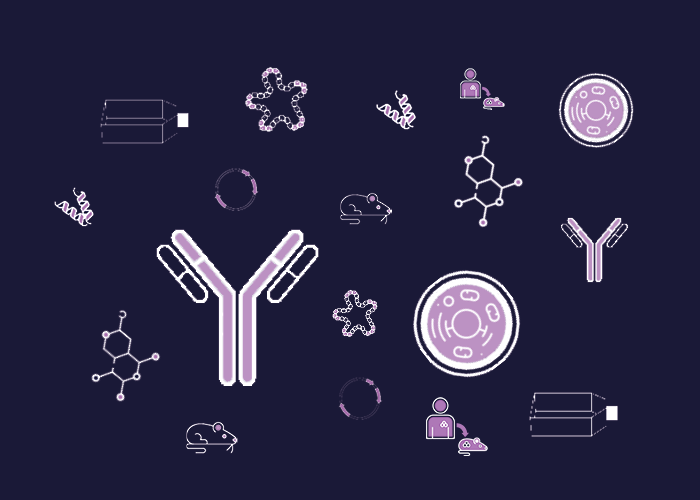Cat. #154472
Anti-RTL1 [13C11]
Cat. #: 154472
Sub-type: Primary antibody
Unit size: 100 ug
Availability: 10-12 weeks
Target: RTL1
Class: Monoclonal
Application: IF ; WB
Reactivity: Human ; Mouse
Host: Mouse
£300.00
This fee is applicable only for non-profit organisations. If you are a for-profit organisation or a researcher working on commercially-sponsored academic research, you will need to contact our licensing team for a commercial use license.
Contributor
Inventor: Tsui-Han Loo
Institute: A*STAR Accelerate Technologies Pte Ltd
Tool Details
*FOR RESEARCH USE ONLY (for other uses, please contact the licensing team)
- Name: Anti-RTL1 [13C11]
- Research fields: Genetics
- Tool sub type: Primary antibody
- Class: Monoclonal
- Purpose: Marker
- Conjugation: Unconjugated
- Reactivity: Human ; Mouse
- Host: Mouse
- Application: IF ; WB
- Description: RTL1 is an imprinted gene and is expressed from the paternal chromosome (Hagan et al., 2009; Lin et al., 2003). In human, excessive RTL1 expression and decreased RTL1 expression are relevant to upd(14)pat-like and upd(14)mat-like phenotypes, respectively(Ogata and Kagami, 2016). Upd(14)pat results in a unique phenotype characterized by facial abnormality, a small, bell-shaped thorax and abdominal wall defects, and upd(14)mat leads to pre- and postnatal growth failure and early onset of puberty. In sheep, excessive RTL1 expression is associated with muscle hypertrophy(Byrne et al., 2010). In mouse, null mice died in late fetal stages due to placenta defect (Ito et al., 2015; Sekita et al., 2008). Mis-regulation of Rtl1 is also associated with hepatocarcinogenesis (Riordan et al., 2013).
- Immunogen: Human RTL1 C-terminus fragment
- Immunogen uniprot id: A6NKG5
- Isotype: IgG2a lambda
- Recommended controls: SH-SY5Y cell
Target Details
- Target: RTL1
- Tissue cell line specificity: Mouse
- Target background: RTL1 is an imprinted gene and is expressed from the paternal chromosome (Hagan et al., 2009; Lin et al., 2003). In human, excessive RTL1 expression and decreased RTL1 expression are relevant to upd(14)pat-like and upd(14)mat-like phenotypes, respectively(Ogata and Kagami, 2016). Upd(14)pat results in a unique phenotype characterized by facial abnormality, a small, bell-shaped thorax and abdominal wall defects, and upd(14)mat leads to pre- and postnatal growth failure and early onset of pube...
Applications
- Application: IF ; WB
Handling
- Format: Liquid
- Unit size: 100 ug
- Shipping conditions: Dry ice
References
- Ogata et al. 2016. J Hum Genet. 61(2):87-94. PMID: 26377239.
- Ito et al. 2015. Development. 142(14):2425-30. PMID: 26138477.
- Riordan et al. 2013. PLoS Genet. 9(4):e1003441. PMID: 23593033.
- Byrne et al. 2010. PLoS One. 5(1):e8638. PMID: 20072617.
- Hagan et al. 2009. PLoS One. 4(2):e4352. PMID: 19194500.
- Sekita et al. 2008. Nat Genet. 40(2):243-8. PMID: 18176565.
- Lin et al. 2003. Nat Genet. 35(1):97-102. PMID: 12937418.

![Anti-RTL1 [13C11]](https://cancertools.org/wp-content/uploads/1b7ad475-f63e-4419-8370-a3ad0ee2d016.png)



